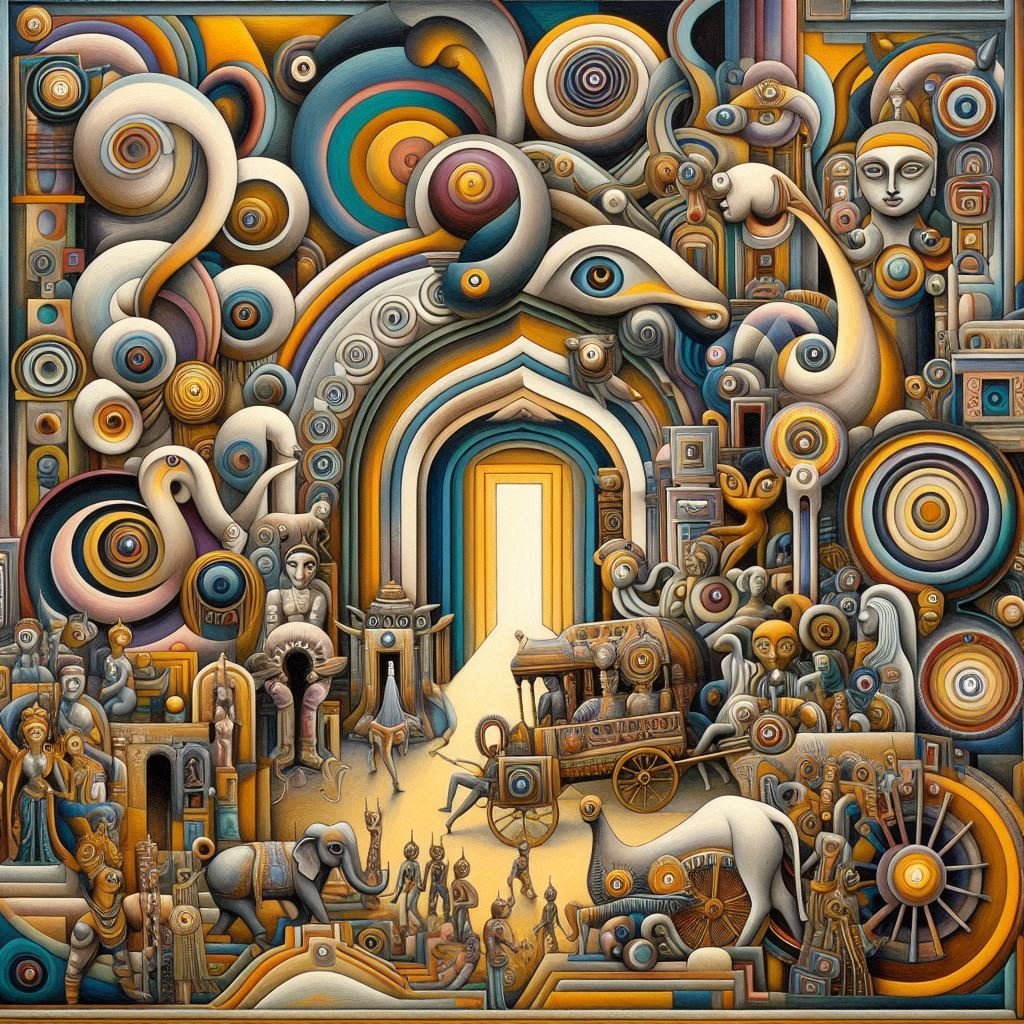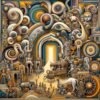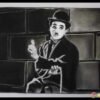The Indian art marketplace, a vibrant tapestry of tradition and modernity, presents a fascinating landscape for artists, particularly those exploring abstract and surreal expressions. While realism and traditional art forms have long held sway, a quiet revolution is underway, with contemporary styles like abstract surrealism gradually finding their footing. This blog post delves into the nuances of this dynamic market, exploring the challenges and opportunities that await artists venturing into the realm of the non-representational.
The Landscape: A Balancing Act
Historically, Indian art has been deeply rooted in narrative and representational forms. From ancient temple carvings to Mughal miniatures and the evocative works of Raja Ravi Varma, the emphasis has been on depicting recognizable subjects and conveying stories. This inclination towards realism has shaped the tastes of many Indian art enthusiasts and collectors, creating a market where traditional styles often dominate.
However, the winds of change are blowing. Globalization, increased exposure to international art movements, and the rise of online platforms are contributing to a growing appreciation for contemporary art. Younger collectors, in particular, are showing a keen interest in exploring diverse artistic expressions, including abstract and surreal works.
The Surrealist Challenge: Bridging the Gap
Abstract surrealism, with its emphasis on subjective interpretation and non-representational forms, can present a unique challenge in a market accustomed to realism. The very nature of this style, which delves into the subconscious and explores dreamlike imagery, may require a shift in perspective for some viewers.
Cultural factors also play a role. Indian artistic traditions, while rich in symbolism, often express these symbols through recognizable iconography. The abstract nature of surrealism, which often departs from familiar forms, can create a disconnect for those accustomed to more direct representations.
Finding a Foothold: Strategies for Abstract Artists
Despite these challenges, abstract artists can thrive in the Indian art marketplace by adopting strategic approaches:
- Cultivate a Unique Voice: Originality is paramount in the realm of abstraction. Artists who can blend Indian cultural influences with contemporary abstract forms will stand out and capture attention.
- Embrace the Digital Realm: Online platforms, such as GranNino and social media, provide invaluable avenues for showcasing work to a global audience. These platforms break down geographical barriers and connect artists with collectors who appreciate diverse artistic expressions.
- Build a Strong Online Presence: A professional website and active engagement on social media are essential for building a following and establishing credibility.
- Network and Collaborate: Attending art fairs, connecting with galleries, and collaborating with other artists can expand reach and create valuable connections.
- Educate and Engage: Abstract art often requires context. Providing explanations of artistic vision and the underlying concepts can help viewers connect with the work on a deeper level.
- Target Niche Markets: Interior designers, architects, and collectors of contemporary art represent potential niche markets for abstract works.
- Seek International Exposure: Participating in online or physical international exhibitions can broaden horizons and attract a wider audience.
- Maintain Proper Documentation: Properly document artwork and keep records of sales and exhibitions. This establishes provenance, which is important for collectors.
The Evolving Landscape: A Glimmer of Hope
While the Indian art marketplace may present challenges for abstract surrealists, it's a dynamic and evolving space. The growing interest in contemporary art, coupled with the power of online platforms, is creating new opportunities for artists to connect with a global audience.
The key is to navigate the market with a blend of artistic vision, strategic thinking, and a willingness to embrace the digital age. By doing so, abstract artists can find their place in the ever-evolving tapestry of Indian art.














Leave a Reply